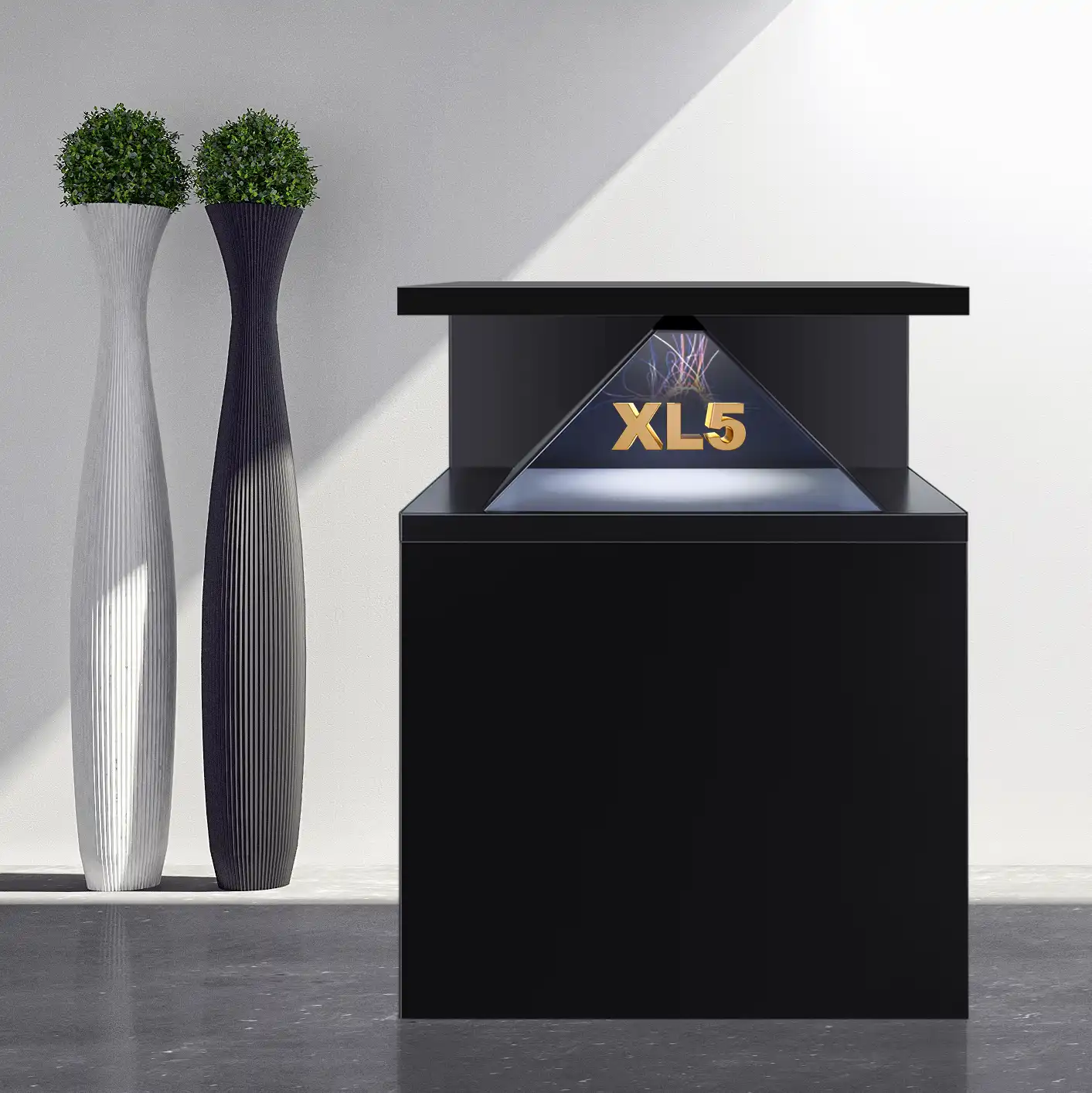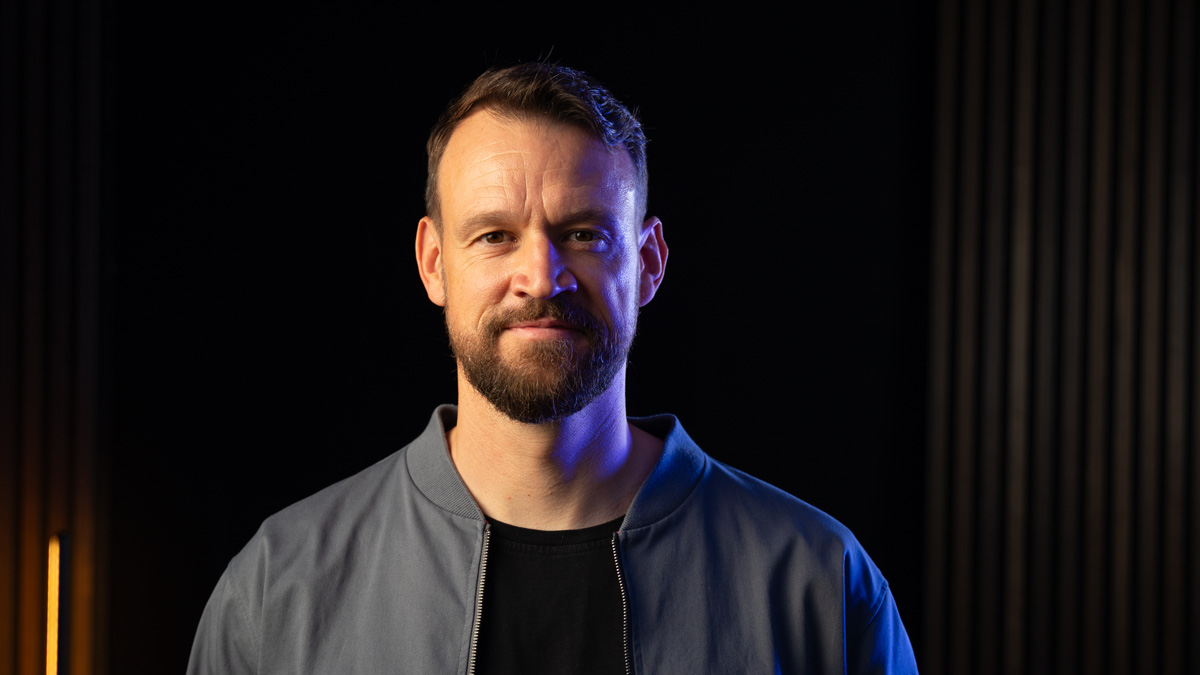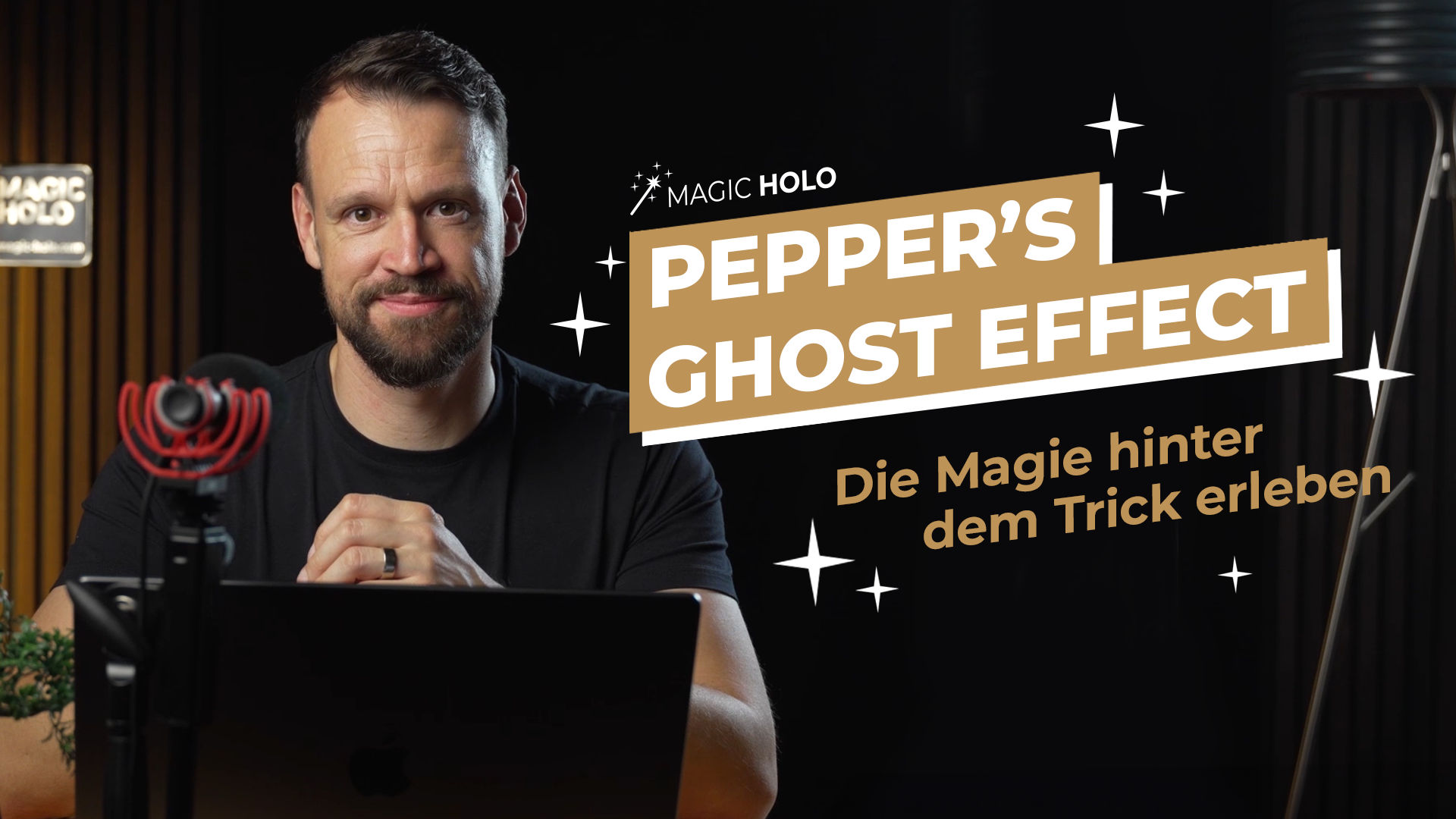Overview
Discover the world of holograms: Technology, applications and individual solutions for companies
Overview
Discover the world of holograms: Technology, applications and individual solutions for companies
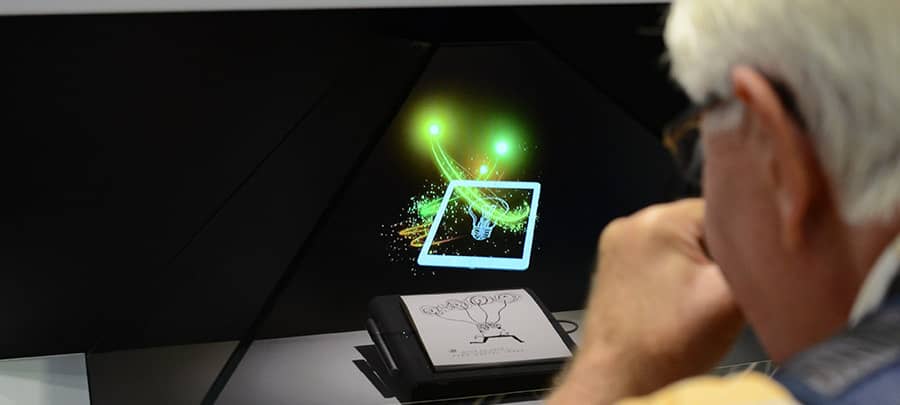
Holograms are gaining in importance
At a time when technology is constantly evolving and opening up new dimensions, the fascinating world of holograms is becoming increasingly important. This impressive technology, which has its origins in the work of Hungarian engineer Dennis Gábor, has since undergone enormous development and now offers a wide range of applications, from the entertainment industry to scientific research.
What can you expect in this article?
In this article, we take a deep dive into the field of holograms, explore their different types and properties, highlight their practical applications in everyday life and entertainment and take a look at the customized solutions our company offers in this innovative field. Join us on this exciting journey and discover how this technology is shaping and revolutionizing our visual perception and communication.
Summary
5 facts about holograms
- 1
Holograms are three-dimensional images of objects that are created by the interaction of light and lasers, for example, and enable a realistic spatial perception of the depicted object.
- 2
Holography as we know it from television or trade fairs was invented by John Henry Pepper in 1847. Physical holography was developed in the 1940s by the Hungarian engineer Dennis Gábor. He was awarded the Nobel Prize in Physics in 1971 for his groundbreaking work.
- 3
There are different types of holograms, such as transmission, reflection and hybrid holograms, which are used in numerous areas such as entertainment, medicine, trade fairs, press conferences, security technology and science.
- 4
Holograms offer companies innovative opportunities to present their products and services visually, create innovative 3D experiences, inspire customers and strengthen their market position.
- 5
Hologram technology has enormous future potential and is constantly evolving to open up new and fascinating applications in various industries.
>
Hologram types and their properties
We have put together 4 hologram types.
There are different types of holograms, each with unique properties. These different properties allow hologram technology to be used in various areas and offer a wide range of possible applications.
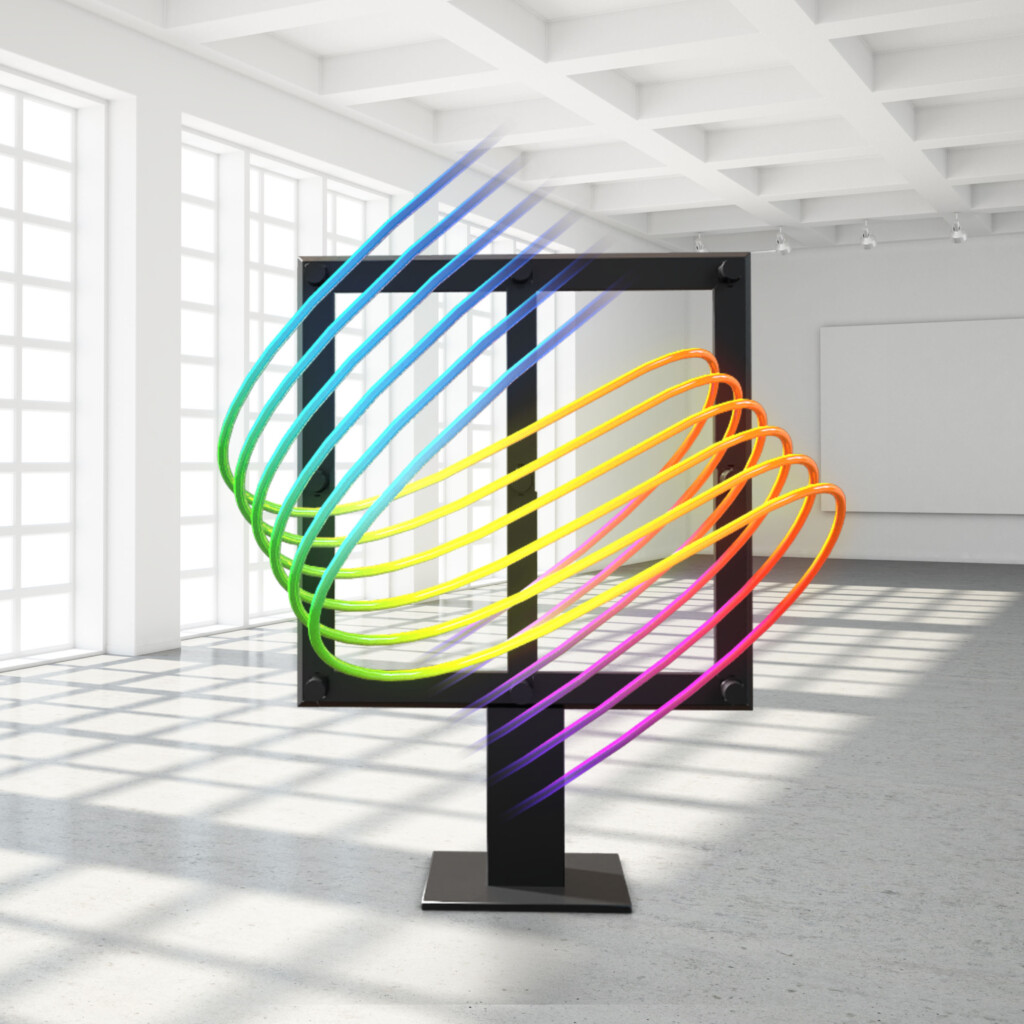
Hologram rotors are MidAir holograms. Here, the light is projected into the air by LEDs mounted on small wings. Due to the speed of rotation, these wings become virtually invisible and the eye only sees the hologram in the air. Hologram rotors can be combined to create large hologram walls, e.g. for trade fairs.
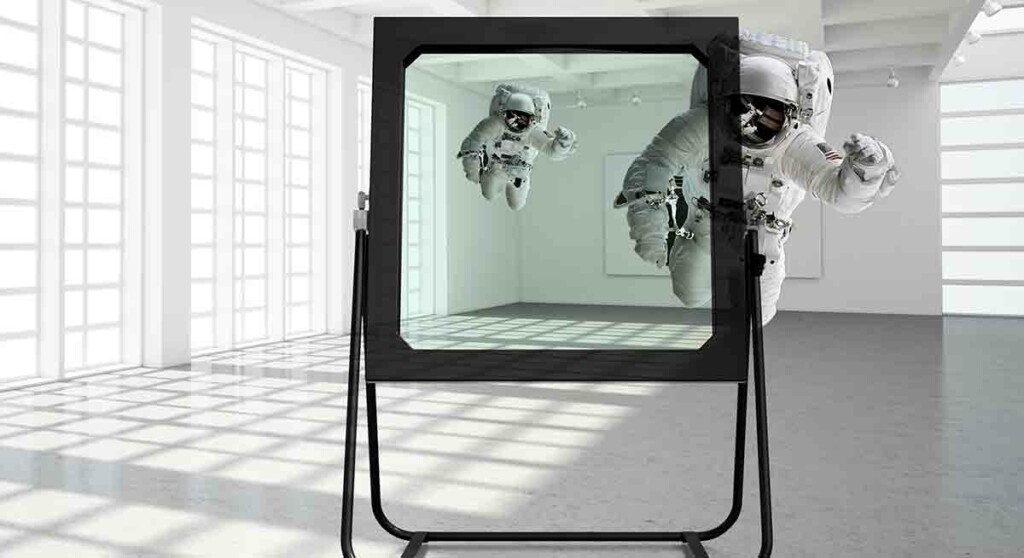
Hologram displays are special reflective holograms. The secret here is a special lens, which is also used in space telescopes, for example. Light hits the lens and is reflected back to the viewer’s eye. The real environment is combined with the holography, similar to head-up displays in cars – only huge.
>
Interim conclusion
The choice of suitable hologram type depends heavily on the intended use.
It is important to understand the specific characteristics of each type of hologram in order to use them effectively and make the most of their respective advantages. Whether on exhibition stands, in museums, on stages or in the showroom, holographic technology offers us fascinating possibilities and opens up new dimensions of our visual perception.
What exactly is a hologram?
A hologram is a three-dimensional representation of objects that is created using light and lasers. The light is refracted and reflected in a specific pattern, making it appear to the viewer as if the object is actually floating in space. The special thing about a hologram is that it is not a flat image, but a real spatial representation of the object for the viewer.
Holograms are often used for spectacular effects in the entertainment industry, for example at trade fair stands, concerts or in film productions. But they are also used in science and technology, for example in the development of new materials or for monitoring machines.
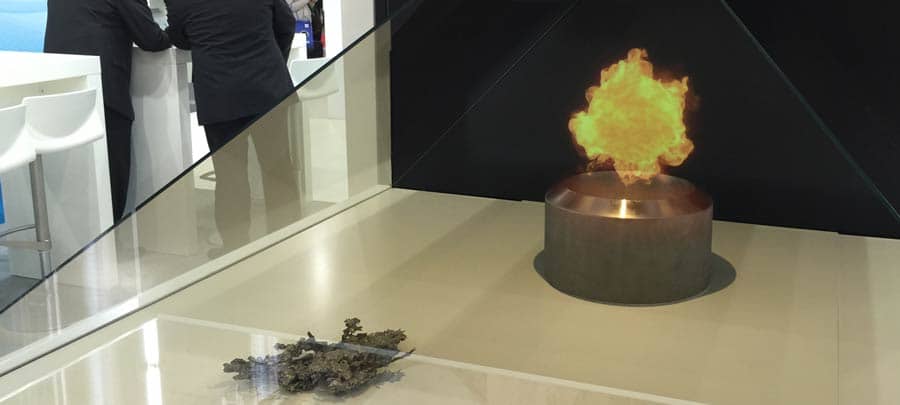
If you are interested in holograms and would like to create one yourself, there are numerous options available today. There are various software programs and tools that can help you with this. However, you should make sure that you have sufficient knowledge in the field of optics and have suitable materials available.
All in all, holograms are fascinating and promising technologies with great potential for the future. Although they are still relatively new, they already have a wide range of uses and exciting applications at trade fairs and congresses, in the entertainment industry and in science and research.
The birth of holography
The beginning of holography
Holography was developed in the early 1940s by the Hungarian engineer Dennis Gábor, who was living in England at the time. Gábor was looking for a method to improve the resolution of electron microscopes when he discovered the principle of holography. He was awarded the Nobel Prize in Physics in 1971 for his groundbreaking work.
Realization of the idea
However, the actual implementation of Gábor’s theory only became possible with the advent of the laser in the 1960s. The laser provided the coherent light necessary for the production of holograms. Since then, holography has made enormous progress and is now used in many areas. The emergence of holography marked a turning point in the history of visual representation and opened the door to a world of three-dimensional possibilities.
Holograms in everyday life and entertainment: a fascinating technology with endless possibilities
The use of holograms has developed rapidly in recent years, opening up completely new perspectives in everyday life and in the entertainment industry. Although not yet ubiquitous, holograms are well on the way to becoming an integral part of our lives.
In everyday life, holographic displays can show information about our surroundings right in front of our eyes, among other things. Imagine how much safer it would be if we could simply see important navigation information as a three-dimensional overlay on the windshield while driving – without having to take our eyes off the road.
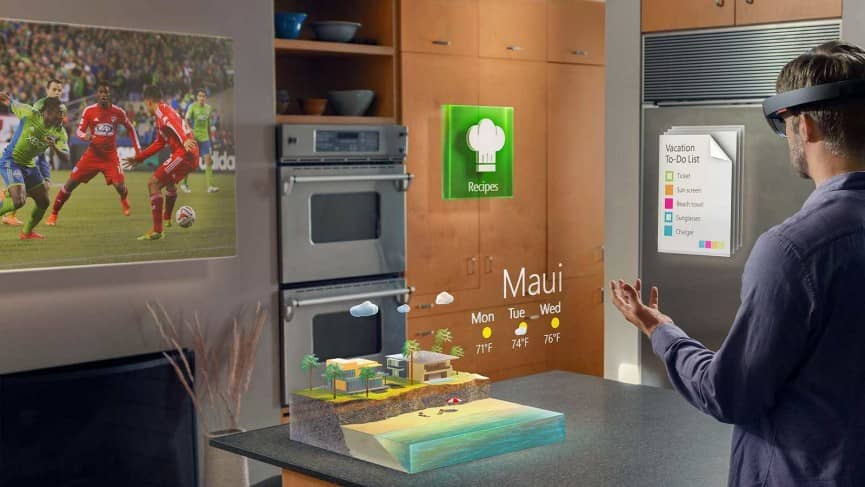
But holograms also offer enormous potential in the healthcare sector: doctors could use this technology to visualize complex medical images and thus make diagnoses more quickly or perform operations more precisely.
In the entertainment industry, we have already had a taste of what is possible. Concerts or sporting events can take place live in different locations at the same time – fans from all over the world would have the feeling of being up close and personal! Furthermore, this revolutionary form of entertainment enables unprecedented interaction between artists and viewers.
Holograms for companies: The future of visual communication
In an increasingly digital world, companies are constantly looking for innovative ways to stand out from the competition. Visual communication plays a crucial role in this, especially when it comes to attracting attention and getting messages across effectively. One technology with great potential in this area is holograms.
With holograms, companies can bring their products or services to life in an impressive way and leave a lasting impression on customers and business partners. The three-dimensional display allows complex information to be presented clearly – whether in presentations to potential investors or at product launches at trade fairs.
Holograms also enable interactive experiences for users. With the help of gesture recognition technology, for example, a holographic assistant can be used to answer questions from visitors to a company stand or guide them through virtual rooms.
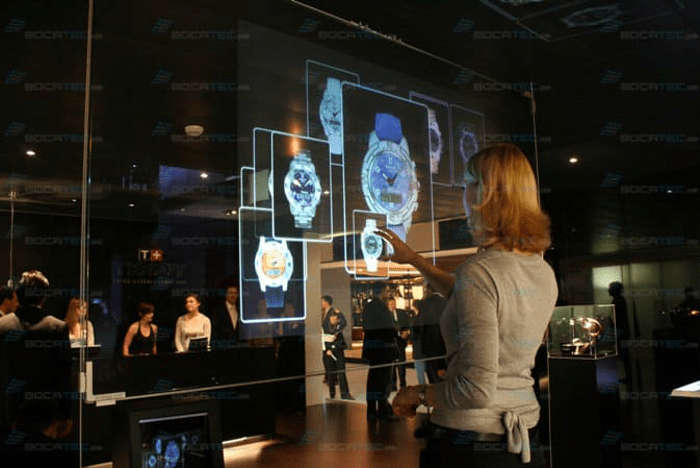
Holograms can be used in a variety of ways: whether as part of a retail marketing campaign or as an innovative training and development method for your own team and especially for product presentation at trade fairs – this technology offers numerous advantages for any modern company.
However, expertise is required to exploit the full potential of this fascinating innovation: from the selection of suitable hologram technology to the creation of appealing content and integration into existing communication channels, there are many aspects to consider. An experienced partner can help develop and implement tailor-made solutions for individual company needs.
Investing in holographic technology can pay off in the long term by giving companies an outstanding visual presentation of their brand or products and thus strengthening their competitiveness on the market.
Our offer: Hologram projectors and customized production
As a leading expert in the field of holographic technology, we are proud to present our latest innovations.
Our comprehensive range of high-quality hologram projectors opens up fascinating possibilities for companies in all industries.
With a wide range of sizes, resolutions and functions, our hologram systems offer the perfect solution for your specific requirements. Our customized products will inspire you, whether you want to create an impressive presentation in your exhibition stand or an unforgettable experience in your showroom.
Our custom manufacturing service allows you to design your own personal hologram according to your wishes. Our team of experts will personally assist you in developing impressive holograms from your products or services. The combination of real products and a hologram or special effects such as water, fire, fog – anything is possible! Over 90% of people have never seen holograms live. We use precisely this advantage for our customers to create an attention-grabbing eye-catcher effect, draw visitors’ attention to the products and stand out from the competition.
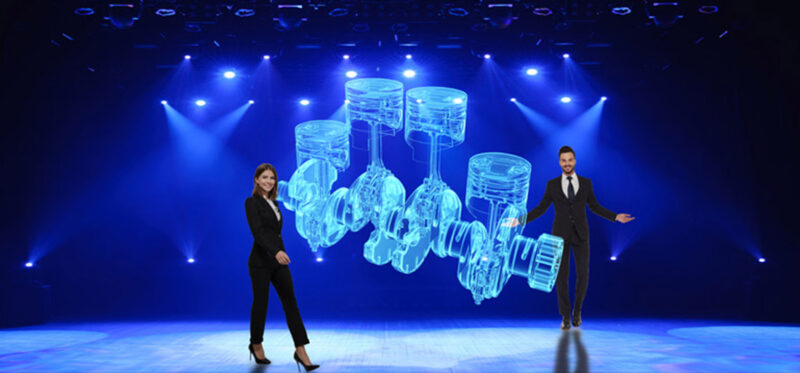
With us, you get everything from a single source. First-class advice, ideas on which hologram best suits your products or company, a recommendation for the right hologram hardware, the design and implementation of the hologram through to the installation and dismantling of the system by our Magic Holo team.
Would you like to experience all holographic systems live?
Then simply book an appointment in our showroom.
We will take time for you, show you different systems and will be happy to develop initial ideas with you and explain everything to you.
Rely on our expertise in the field of holographic imaging and turn your ideas into reality.
Conclusion
The fascinating technology of holograms, developed by Dennis Gábor, enables revolutionary applications at trade fairs, in entertainment, science and everyday life.
Different types of holograms offer unique possibilities and open up new dimensions in visual communication. Holograms are not only impressive show effects, but also innovative and practical solutions for companies.
Our customized range of hologram projectors and custom-made products reflects the diverse possibilities of this technology. As your reliable partner, we are proud to accompany you on your journey of discovery into the world of holography and to open up new visual horizons together with you.
>
FAQ
Other relevant articles
What is a 3D hologram?
What is a 3D hologram? Everything clearly explained.
What is the legendary Pepper’s Ghost effect?
What is the legendary Pepper's Ghost effect?
How to use hologram projectors effectively at your trade fair stand
How to use hologram projectors effectively at your trade
Discover the world of holograms: Technology, applications and individual solutions for companies
Discover the world of holograms: Technology, applications and individual solutions
Hologram projector – Rent. Buy. Comparison & Info
Hologram projector - Rent. Buy. Comparison & Info
Everything you need to know about HoloPro
How was HoloPro developed? The development

